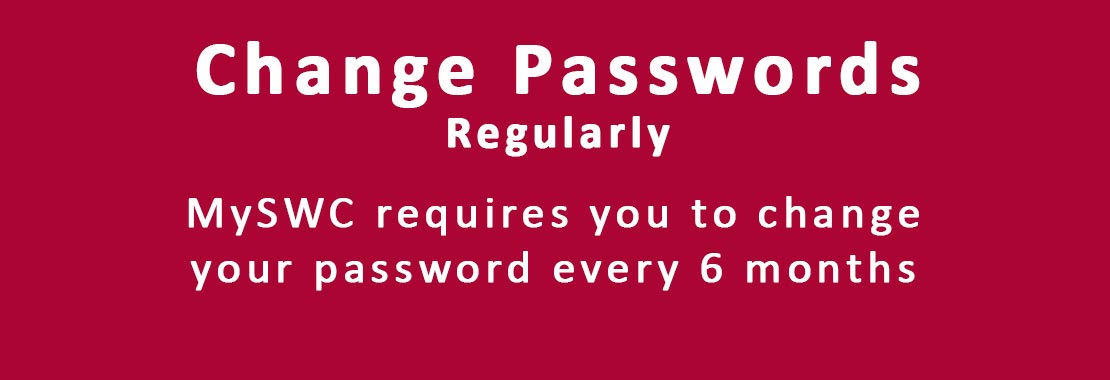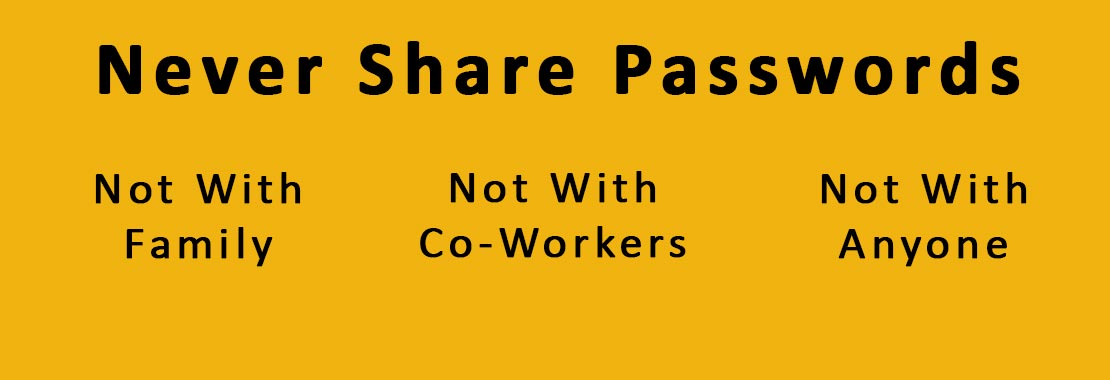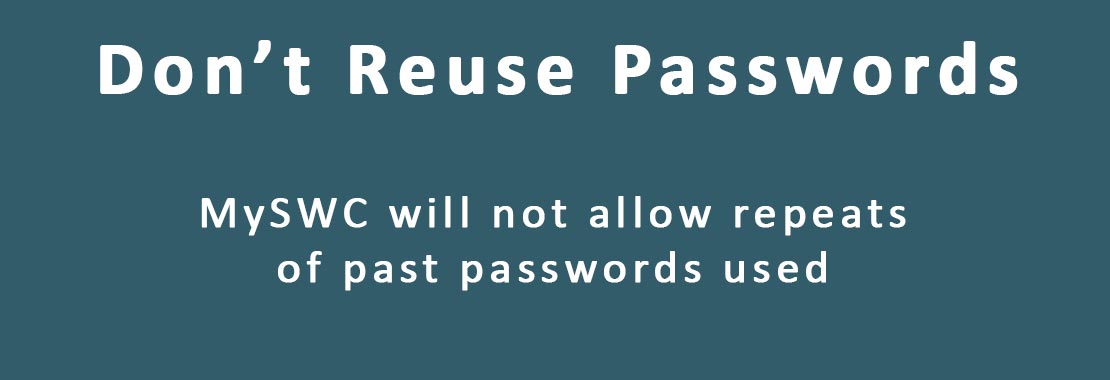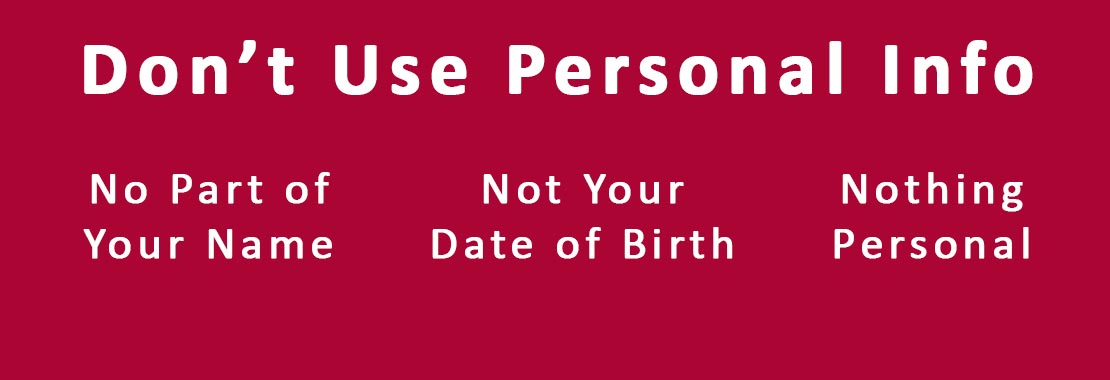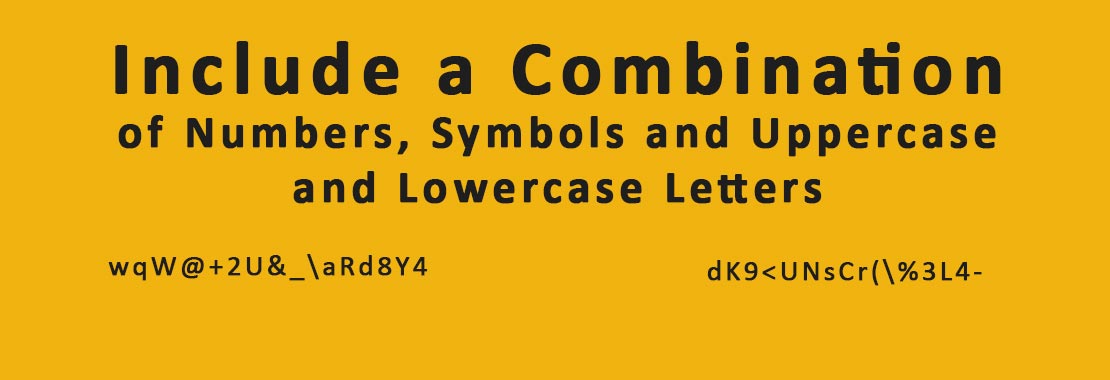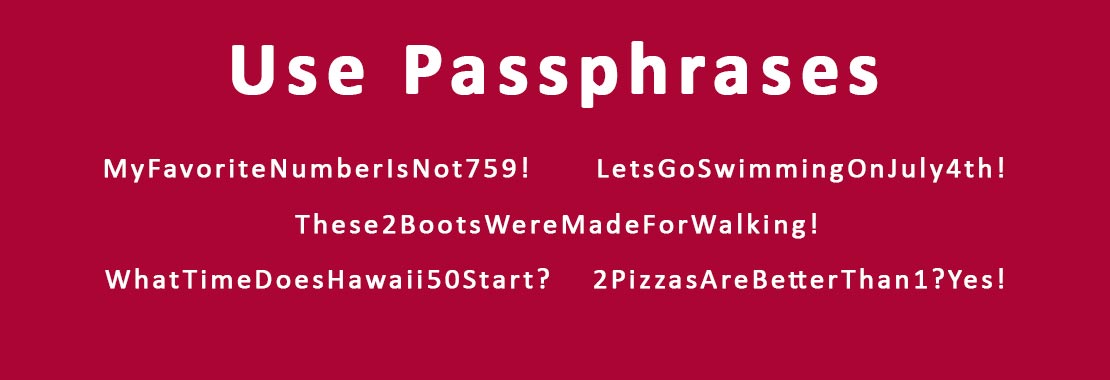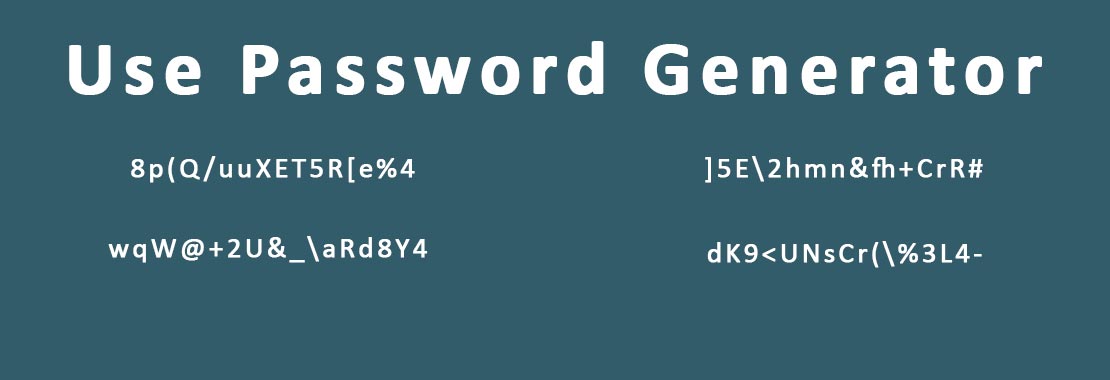Safe & Secure IT
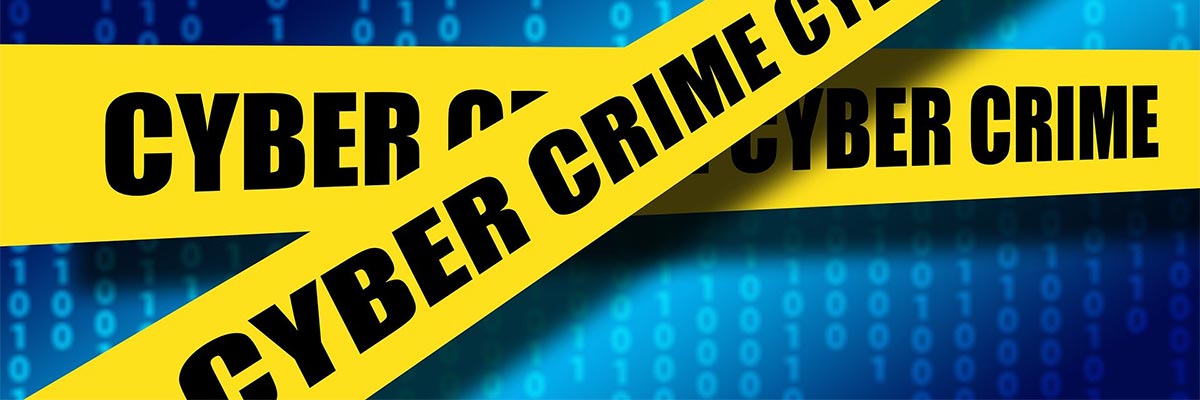
Now more than ever, it's extremely important that we all work together to protect our network and systems from intrusion!
Cyber criminals are getting smarter at finding ways to steal your personal information and ultimately your identity. Not to mention devious attempts at tricking you into giving away your MySWC login information for them to gain access to the SWC Secure Network and its systems! Be informed so you can be smarter than the bad guys (and gals) and help keep private information safe and secure!
Please take your time in reviewing the important security information and tips on this page. If you ever have questions about IT security or have concerns that an electronic message isn't authentic, please don't hesitate to contact us. We're happy to help keep us all safe and secure from the bad guys! Contact information is at the bottom of this page.
Spotlight on Phishing & Email
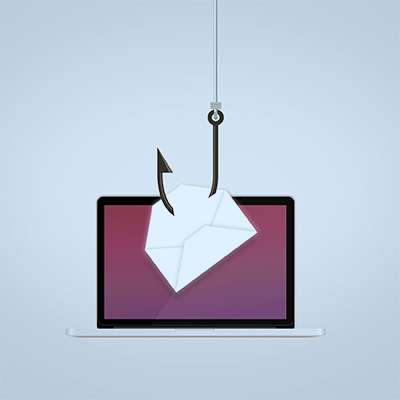
Phishing is the fraudulent attempt to obtain sensitive information or data, such as usernames, passwords and credit card details, by disguising oneself as a trustworthy entity in an electronic communication. Typically carried out by email spoofing, instant messaging, and text messaging, phishing often directs users to enter personal information at a fake website which matches the look and feel of the legitimate site.
Phishing is an example of social engineering techniques used to deceive users. Users are lured by communications purporting to be from trusted parties such as social web sites, auction sites, banks, colleagues/executives, online payment processors or IT administrators.
Source: Phishing on Wikipedia
Phishing Email Examples
- Superintendent/President Shared a File (PDF)
- Migration Notice from a Financial Aid Employee (PDF)
- Signed-In From Unknown Location (PDF)
- Social Engineering Attempt (PDF)
- Phishing IQ Test (External Site)
- Phishing Quiz (External Site)
Phishing Email Reminders
- If you get an email from someone you work with, but don't normally hear from, and if it's not from an SWC email account, question it. ESPECIALLY if it says not to! When in doubt, pick up the phone and call them to ask if they sent the email.
- We don’t send you password expiration reminders with links in them. MySWC sends you reminders that your password is going to expire in X many days, but it’s up to you to get there and change it.
- We never ask you to send your password via email.
- We do NOT have mailbox size limits.
- We never request you “validate” yourself with us. We know you.
Let us know if you get emails that you’re just not sure about - use the Report Phishing button in Outlook or forward them to us at phishing@swccd.edu and we will investigate. If they are phishing, we'll block their access to and from the College, and we'll track down the host sites and try to shut them down!
If you think you’ve fallen for one that's asked for a password or lured you to log in somewhere, and you're questioning yourself, please change your password immediately and let us know ASAP so we can protect both you and our networks, servers and data!
Spotlight on Passwords
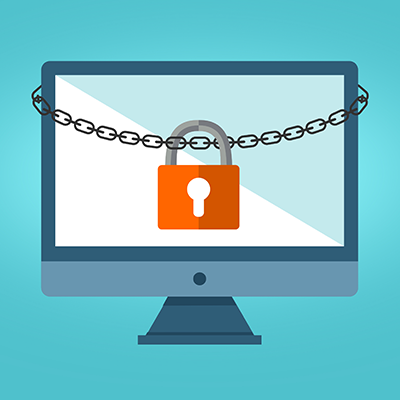
Secure Password Tips & Tools
- Change Passwords Regularly
MySWC requires you to change your password every 6 months. - Never Share Passwords
Not with family, not with co-workers, not with anyone! - Don't Reuse Passwords
MySWC will not allow repeats of past passwords used. - Don't Use Personal Info
No part of your name, not your date of birth, nothing personal! - Include a Combination
of numbers, symbols and uppercase and lowercase letters. - Use Passphrases
Examples include 2PizzasAreBetterThan1?Yes! and LetsGoSwimmingOnJuly4th! - Use a Password Generator
www.passwordsgenerator.net or www.lastpass.com
If you suspect your MySWC password was stolen and/or used without your consent, please change your password immediately!
Safe & Secure IT Workshops & Trainings
Cybersecurity trainings through Keenan SafeColleges are available to all employees. Visit How to Access trainings on Keenan SafeColleges to get started. Live cybersecurity awareness workshops are held throughout the year. Check Cornerstone for upcoming dates and to register. You can also access recorded workshops below:
Other Safe & Secure IT Topics
Get In Touch
We're here to help ease your security concerns!
Please don't hesitate to contact us for guidance/questions.
